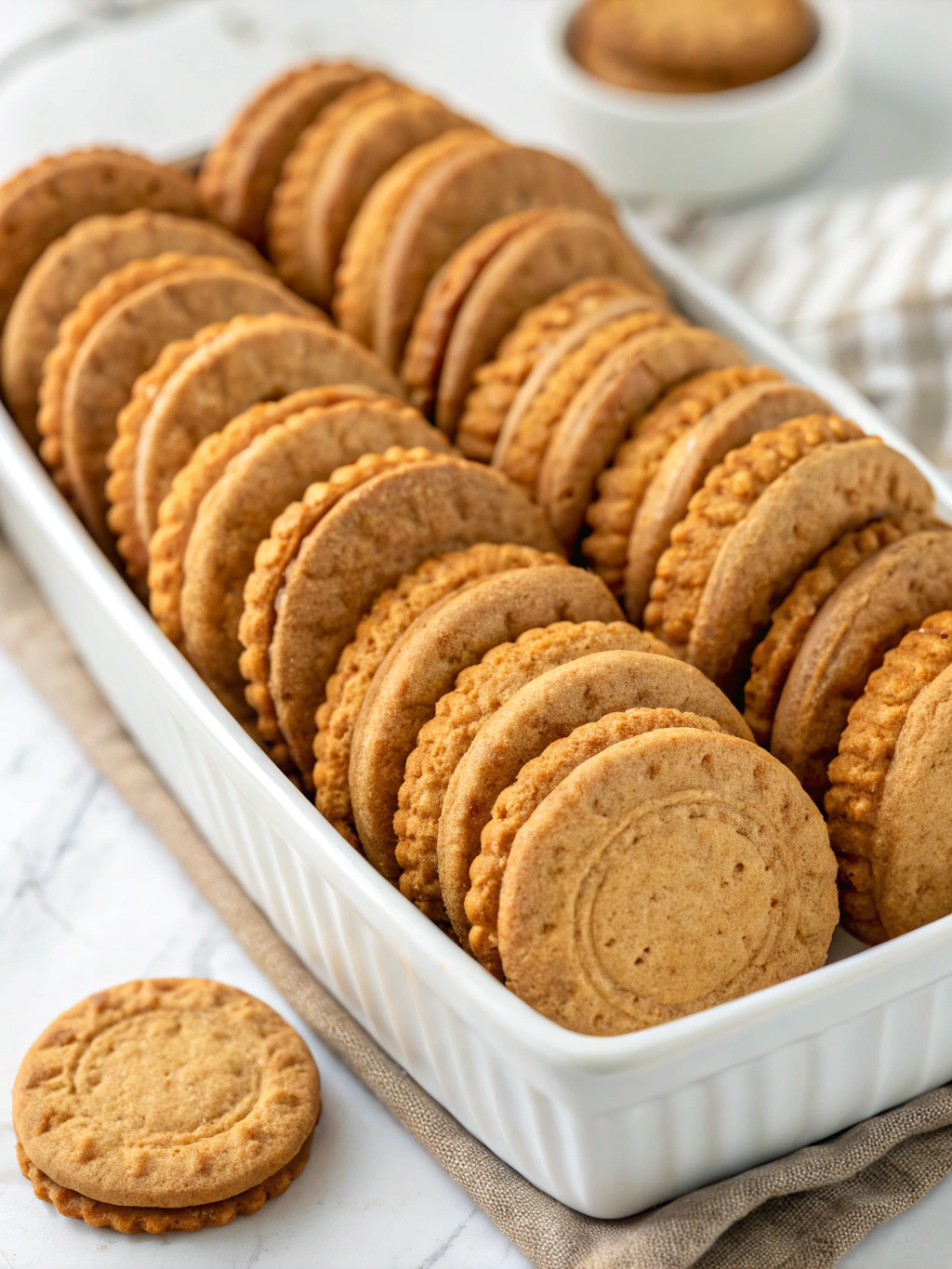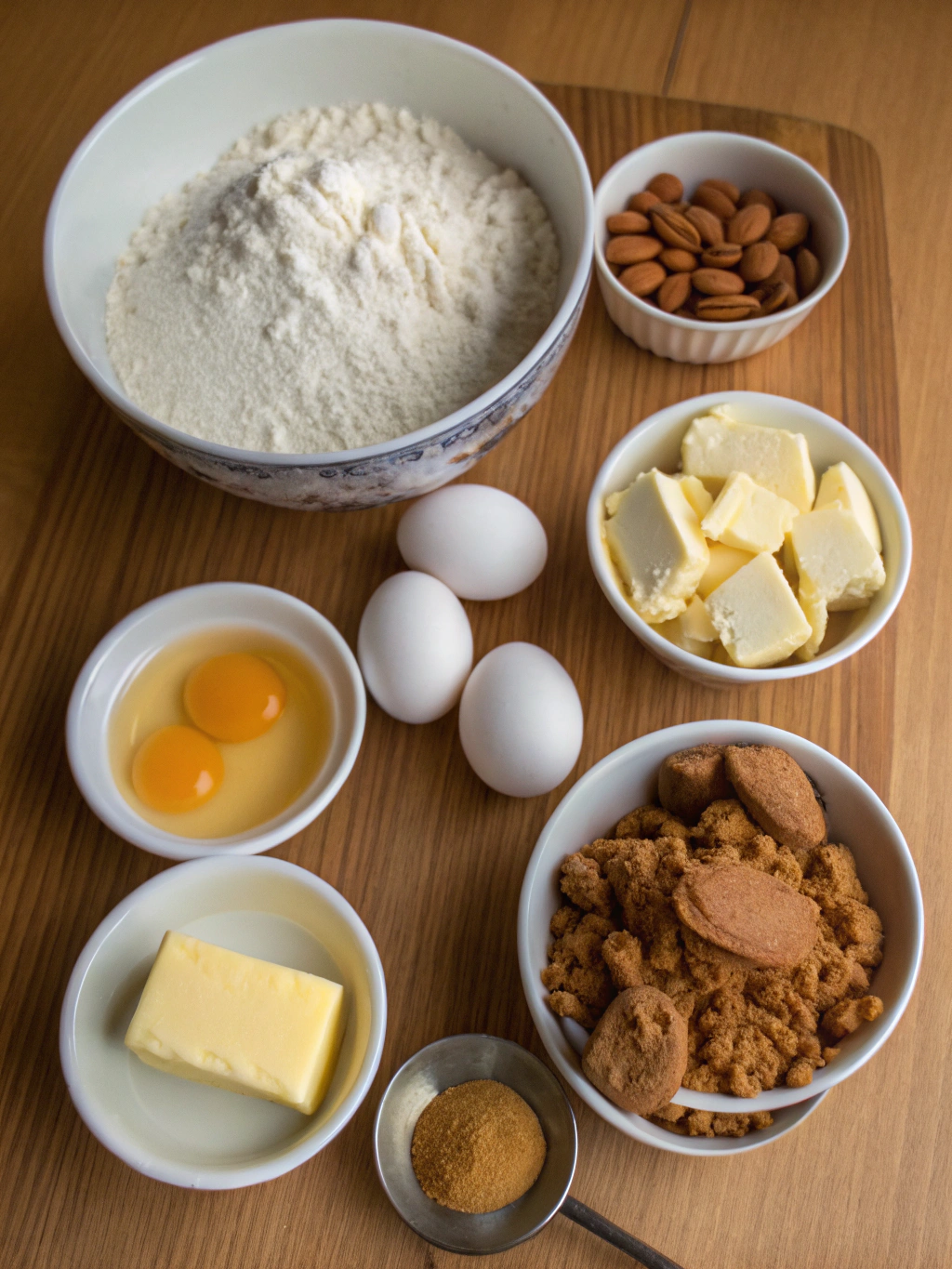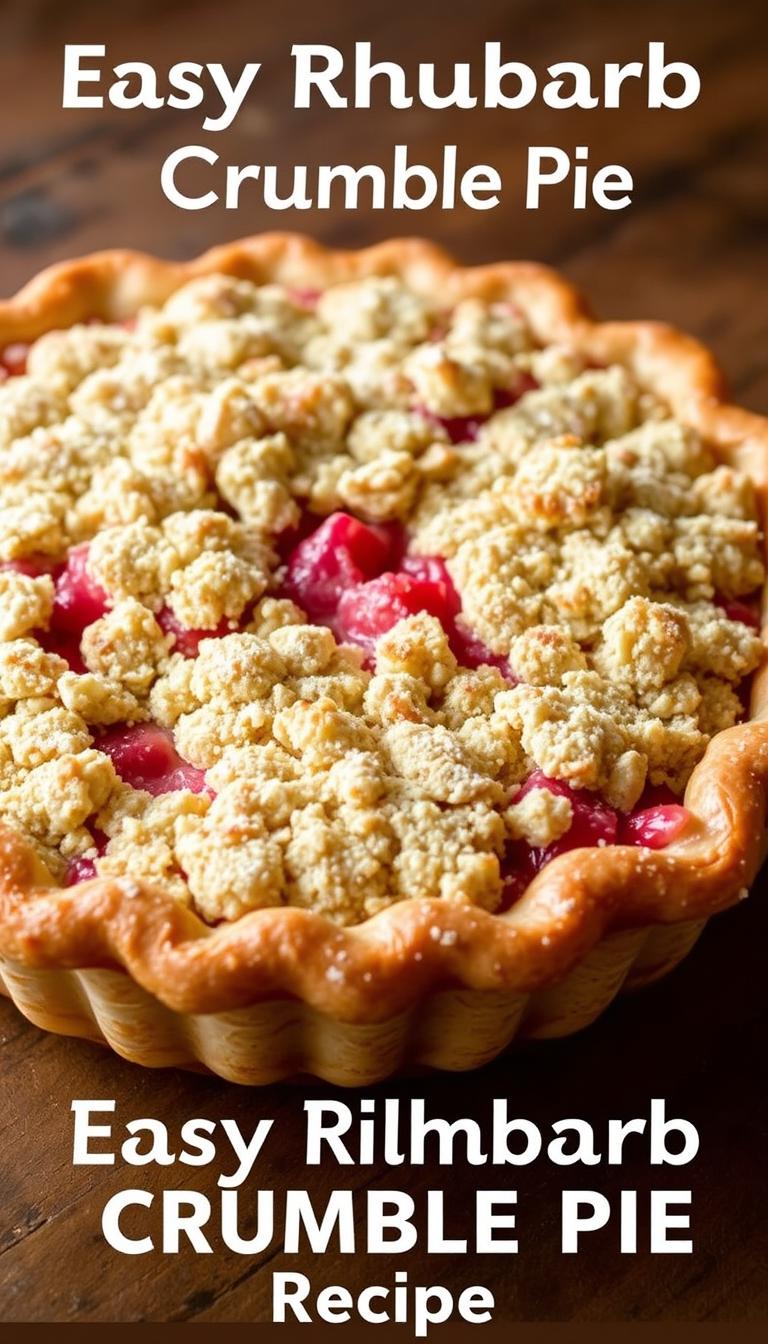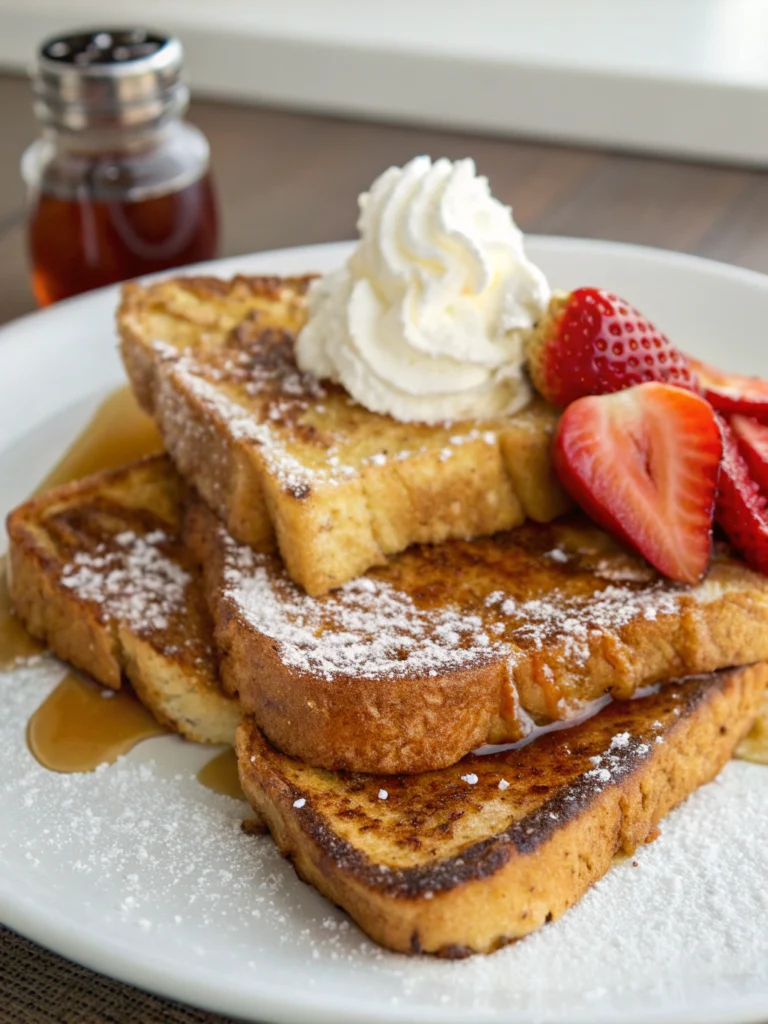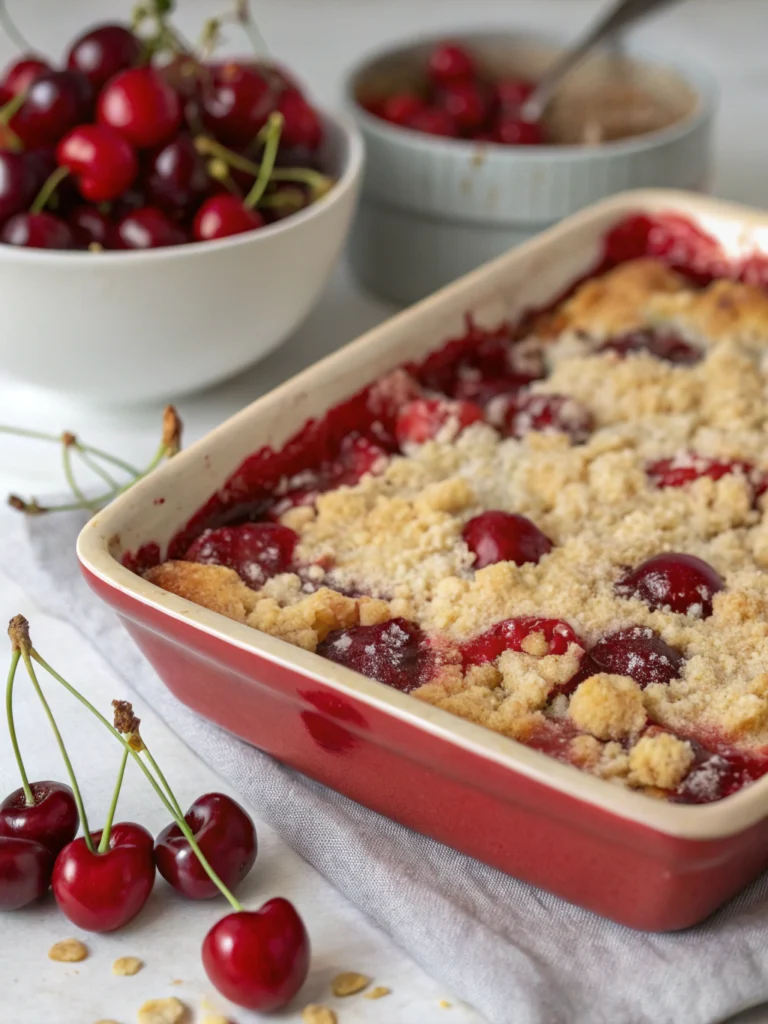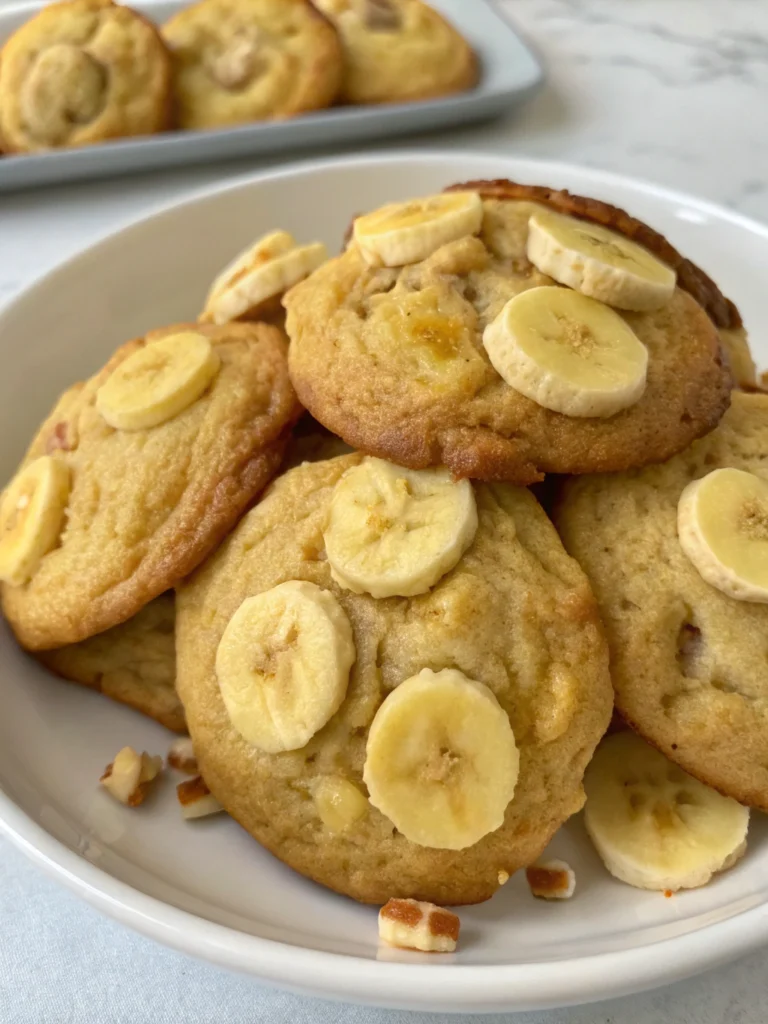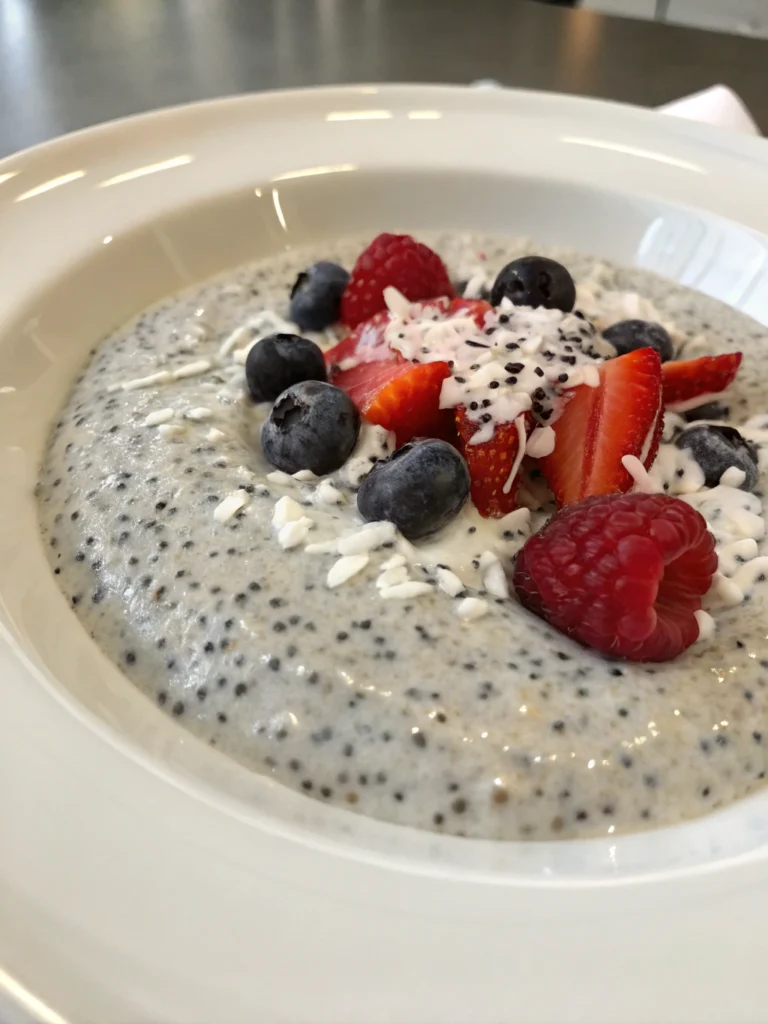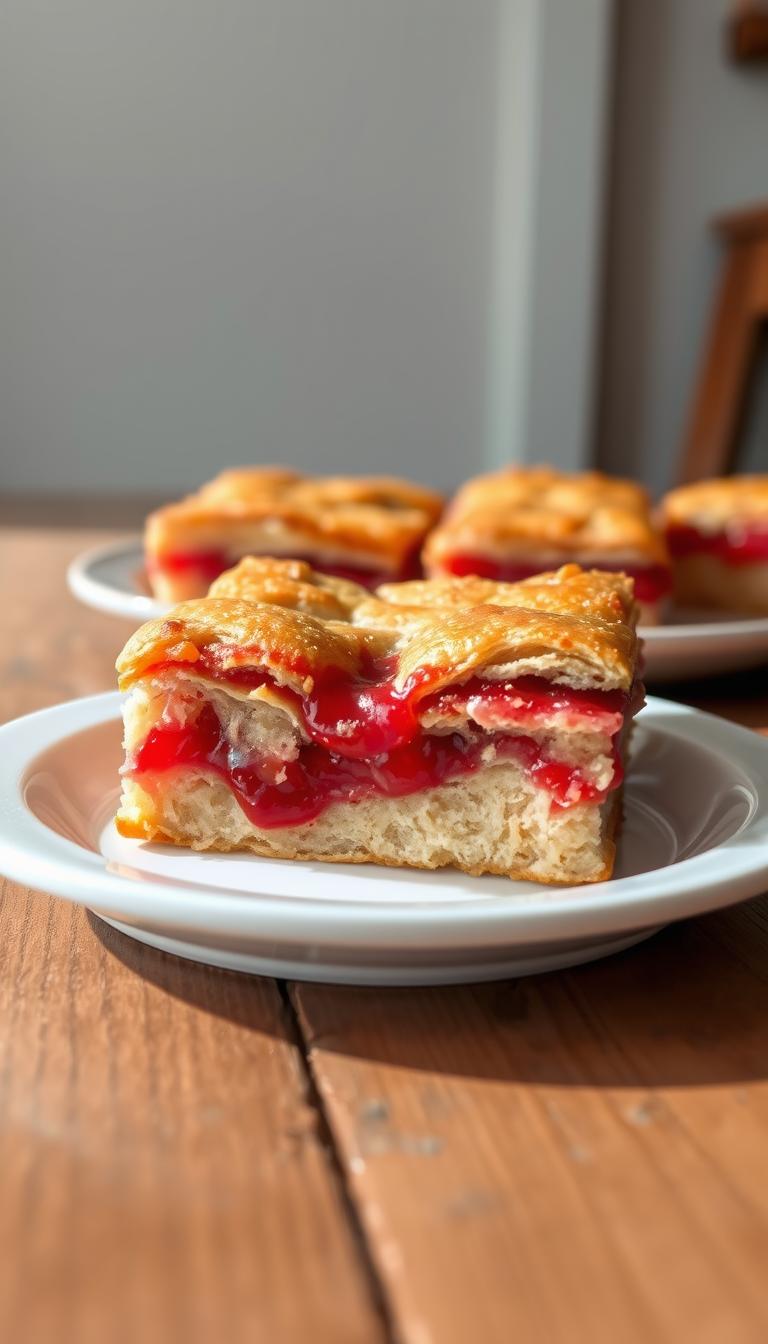Biscoff Cookies
These homemade Biscoff cookies deliver that perfect balance of caramelized sweetness and warm spices you love from the famous European cookie. With their signature crisp snap and rich flavor, these cookies make an irresistible treat for coffee breaks or holiday celebrations.
Easy Biscoff Cookies Recipe
There’s something magical about the distinctive taste of Biscoff cookies – that perfect harmony of caramelized sugar, warm cinnamon, and subtle spices that makes them utterly irresistible. While the original Lotus Biscoff cookies have been delighting taste buds since 1932, this homemade version brings that same enchanting flavor right to your kitchen. These cookies have deep roots in Belgian tradition, originally served alongside coffee as “speculoos” cookies, but today they’ve gained worldwide popularity for their unique flavor profile.
THIS RECIPE:
- Creates perfectly crisp, caramelized cookies with authentic Biscoff flavor
- Uses simple pantry ingredients with no hard-to-find components
- Requires minimal chilling time for quick preparation
- Produces cookies that store beautifully for weeks
| Recipe Details | Information |
|---|---|
| Prep Time | 20 minutes |
| Chill Time | 30 minutes |
| Cook Time | 12 minutes |
| Total Time | 1 hour 2 minutes |
| Servings | 24 cookies |
| Yield | 2 dozen cookies |
What makes this Biscoff cookies recipe truly special is its accessibility – even novice bakers can achieve outstanding results. The dough comes together quickly, requires minimal chilling, and bakes up with that signature crispness that Biscoff lovers crave. Whether you’re looking to recreate the cookies you enjoyed on your European vacation or simply want to experience the rich, caramelized spice flavor at home, this recipe delivers authentic results every time.
Ingredients for Biscoff Cookies
The secret to truly exceptional homemade Biscoff cookies lies in using fresh, high-quality ingredients. Since this cookie relies on a delicate balance of warm spices, make sure your spices haven’t been sitting in your pantry for years – fresh spices make a noticeable difference in the final flavor profile.
For the Cookie Dough:
- 2 cups (250g) all-purpose flour
- 1/2 teaspoon baking soda
- 1/2 teaspoon salt
- 1 tablespoon ground cinnamon
- 1/4 teaspoon ground nutmeg
- 1/4 teaspoon ground cloves
- 1/4 teaspoon ground ginger
- 1/4 teaspoon ground cardamom
- 1/2 cup (113g) unsalted butter, room temperature
- 3/4 cup (150g) dark brown sugar, packed
- 1/4 cup (50g) granulated sugar
- 1 large egg, room temperature
- 1 teaspoon vanilla extract
Ingredient Quality Tips:
The brown sugar provides that essential caramelized flavor that makes Biscoff cookies distinctive, so use fresh, moist dark brown sugar for best results. For an authentic experience, European-style butter with higher fat content creates a richer flavor, though standard American butter works well too.
| Ingredient Category | Recommended Quantity | Quality Tips |
|---|---|---|
| Flour | 2 cups all-purpose | Use unbleached for better flavor |
| Spices | 2 tablespoons total | Look for vibrant color and strong aroma |
| Butter | 1/2 cup unsalted | European-style preferred for richness |
| Sugars | 1 cup combined | Fresh brown sugar without lumps |
| Binders | 1 large egg | Room temperature for better incorporation |
How to Make Biscoff Cookies
Creating the perfect homemade Biscoff cookie requires attention to detail throughout the baking process. The technique focuses on properly incorporating the ingredients to achieve that distinctive caramelized flavor and perfect crisp-yet-tender texture that makes Biscoff cookies so beloved.
Prepare the dry ingredients: In a medium bowl, whisk together the flour, baking soda, salt, cinnamon, nutmeg, cloves, ginger, and cardamom until thoroughly combined. This ensures even distribution of the spices throughout the dough.
Cream the butter and sugars: In a large mixing bowl, beat the butter, brown sugar, and granulated sugar together on medium-high speed for 3-4 minutes until light and fluffy. This step is crucial for incorporating air into the dough and developing the caramelized flavor.
Add the wet ingredients: Beat in the egg and vanilla extract until fully incorporated, scraping down the sides of the bowl as needed.
Combine wet and dry ingredients: Gradually add the dry ingredient mixture to the wet ingredients, mixing on low speed just until combined. Avoid overmixing, which can develop gluten and make the cookies tough.
Chill the dough: Shape the dough into a flat disc, wrap in plastic wrap, and refrigerate for at least 30 minutes. This step solidifies the butter and allows the flavors to meld.
Roll and cut: Preheat your oven to 350°F (175°C) and line baking sheets with parchment paper. On a lightly floured surface, roll the chilled dough to 1/8-inch thickness. Use a rectangular cookie cutter or simply cut into 2×3-inch rectangles with a knife.
Emboss and dock: For authentic-looking cookies, use a fork to create a pattern on the cookie surface and prick small holes (docking) across the surface.
Bake to perfection: Transfer the cookies to the prepared baking sheets, spacing them 1 inch apart. Bake for 10-12 minutes until the edges turn golden brown.
Cool properly: Allow the cookies to cool on the baking sheet for 5 minutes before transferring to a wire rack to cool completely. The cookies will continue to crisp as they cool.
Pro tip: For the most authentic texture, bake until the edges are distinctly golden but the centers are still slightly soft – they’ll firm up as they cool, giving you that perfect snap!
Tips for Making Biscoff Cookies
Mastering the perfect homemade Biscoff cookie comes down to understanding a few key techniques that professional bakers use. These tips will help you achieve that signature caramelized flavor and ideal crisp texture every time.
- Spice balance is key: The distinctive Biscoff flavor relies on the perfect balance of spices – cinnamon should predominate with the other spices providing subtle background notes
- Chill thoroughly: A properly chilled dough is easier to roll thin and helps prevent spreading during baking
- Roll consistently: Aim for uniform 1/8-inch thickness for proper baking and that signature crispness
- Watch for golden edges: Bake just until the edges turn golden brown – this indicates proper caramelization
| Technique | Recommendation | Purpose |
|---|---|---|
| Sugar ratios | 3:1 brown to white sugar | Develops caramelized flavor |
| Mixing method | Cream butter and sugar fully | Creates proper structure and incorporates air |
| Rolling technique | Roll between parchment | Prevents sticking without excess flour |
| Temperature control | Cool kitchen, cold butter | Maintains proper dough consistency |
The most critical step for perfect Biscoff cookies is achieving the right thickness when rolling. Too thick, and your cookies will be soft rather than crisp; too thin, and they’ll burn before cooking through. A thickness of 1/8-inch (about 3mm) delivers that authentic Biscoff snap. Using rolling pin guides or silicone bands on your rolling pin helps maintain consistent thickness throughout.
Make-Ahead Instructions
Biscoff cookies are ideal candidates for make-ahead preparation, which can be especially helpful during busy holiday seasons when you want fresh-baked cookies without the last-minute rush.
The cookie dough can be prepared and refrigerated for up to 3 days before baking. Simply prepare the dough according to the recipe, wrap it tightly in plastic wrap, and store in the refrigerator. When ready to bake, allow the dough to sit at room temperature for about 10-15 minutes to make it pliable enough for rolling.
For longer storage, the dough freezes exceptionally well for up to 3 months. Prepare the dough, form it into a flat disc, wrap tightly in plastic wrap, then place in a freezer-safe bag. Thaw overnight in the refrigerator before rolling and baking.
You can also pre-cut the cookies and freeze them unbaked. After cutting the dough into shapes, place them on a parchment-lined baking sheet and freeze until solid (about 2 hours), then transfer to freezer bags. Bake directly from frozen, adding 1-2 minutes to the baking time.
Pro tip: If freezing pre-cut cookies, emboss them before freezing so the design maintains its sharpness during baking.
Storing Leftovers
Homemade Biscoff cookies actually improve with proper storage, as the flavors continue to develop and meld over the first few days after baking.
For optimal freshness, store completely cooled Biscoff cookies in an airtight container at room temperature. Adding a piece of bread to the container helps maintain the perfect texture – the bread provides just enough moisture to prevent the cookies from becoming too hard without making them soft.
When stored properly, Biscoff cookies will maintain their quality for up to 3 weeks at room temperature – much longer than most homemade cookies. Their low moisture content contributes to this excellent shelf life.
If you notice your cookies beginning to soften after extended storage, you can refresh them by placing them in a 300°F oven for 3-5 minutes, then allowing them to cool completely. This will restore their delightful crisp texture.
Freezing Biscoff Cookies
Baked Biscoff cookies freeze beautifully, making them perfect for preparing well ahead of time for special occasions or ensuring you always have a treat on hand for unexpected guests.
To freeze baked cookies, ensure they are completely cooled to room temperature. Layer them between sheets of parchment paper in an airtight container or freezer-safe bag to prevent sticking. Squeeze out as much air as possible before sealing to prevent freezer burn.
Properly stored, frozen Biscoff cookies will maintain their quality for up to 3 months. Their low moisture content helps them withstand freezing without significant texture changes.
When ready to enjoy, thaw the cookies at room temperature for about 30 minutes – no need to unwrap them during thawing as condensation can make them soggy. For the freshest taste, you can refresh thawed cookies in a 300°F oven for 3-4 minutes, then allow to cool completely before serving.
Pro tip: If planning to freeze, consider slightly underbaking the cookies by 1 minute – this will compensate for the additional crisping that occurs during the thawing and refreshing process.
Serving Suggestions
Homemade Biscoff cookies shine beautifully on their own, but they can also elevate other desserts and pair wonderfully with various beverages for a truly special treat.
The traditional way to enjoy Biscoff cookies is with coffee – their caramelized, spiced flavor perfectly complements the bitter notes in coffee. Try serving them alongside a strong espresso or cappuccino for an authentic European coffee break experience. For non-coffee drinkers, these cookies pair beautifully with black tea, chai, or even hot chocolate.
Beyond simple pairings, crushed Biscoff cookies make an exceptional base for cheesecake or pie crusts. Try layering them with vanilla custard and whipped cream for a simple yet elegant trifle, or use them as ice cream sandwich cookies with coffee or vanilla ice cream.
For a show-stopping dessert board, arrange your homemade Biscoff cookies alongside fresh berries, dark chocolate pieces, and a small bowl of cookie butter for dipping. This creates an interactive dessert experience perfect for gatherings.
Pro tip: For an extra-special treat, sandwich two cookies with a thin layer of cookie butter or chocolate-hazelnut spread – the combination is absolutely divine!
FAQ
Can I make these Biscoff cookies without all the spices listed?
While cinnamon is absolutely essential for authentic Biscoff flavor, you can simplify the spice blend if needed. If you don’t have all the spices on hand, prioritize the cinnamon, cloves, and cardamom. In a pinch, you could substitute 1½ tablespoons of pumpkin pie spice plus an extra ½ tablespoon of cinnamon, though the flavor won’t be identical to traditional Biscoff.
Why didn’t my Biscoff cookies turn out crispy?
The most common reason for soft Biscoff cookies is insufficient baking time or rolling the dough too thick. For that signature snap, ensure you’re rolling the dough to 1/8-inch thickness and baking until the edges are golden brown. Also, be sure to let them cool completely on a wire rack – they continue to crisp as they cool.
Can I use cookie butter in this recipe to enhance the Biscoff flavor?
While it might seem logical to add cookie butter to intensify the flavor, it actually changes the texture significantly, making the cookies softer. Instead, ensure you’re using fresh spices and dark brown sugar, which contribute the essential caramelized notes that define Biscoff cookies.
How can I make these Biscoff cookies vegan?
To make vegan Biscoff cookies, substitute the butter with a high-quality plant-based butter (not margarine), and replace the egg with a flax egg (1 tablespoon ground flaxseed mixed with 3 tablespoons water, allowed to sit for 15 minutes). The texture may be slightly different, but the flavor profile remains authentic.
My dough is too sticky to roll out. What went wrong?
Sticky dough typically means it needs more chilling time. Return it to the refrigerator for at least 30 more minutes. If it’s still too sticky after chilling, lightly dust your work surface and rolling pin with flour. Working in a cool kitchen also helps maintain proper dough consistency while rolling.

